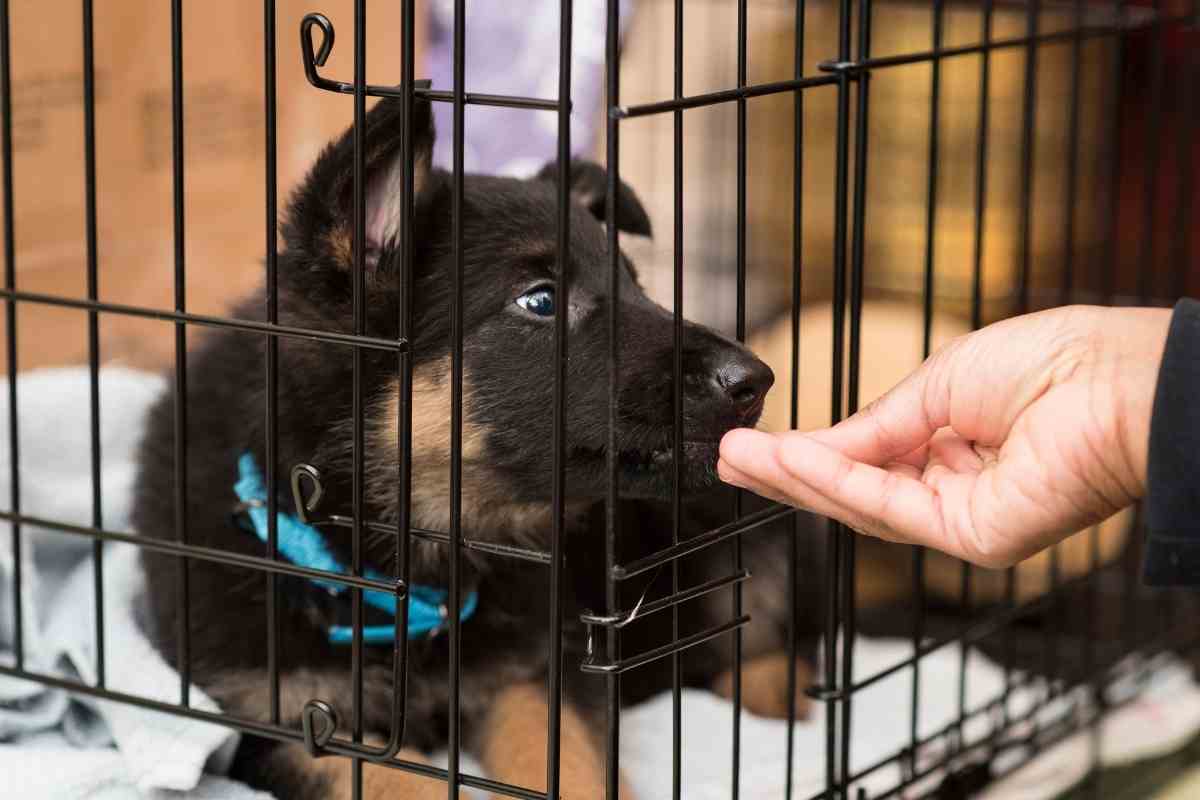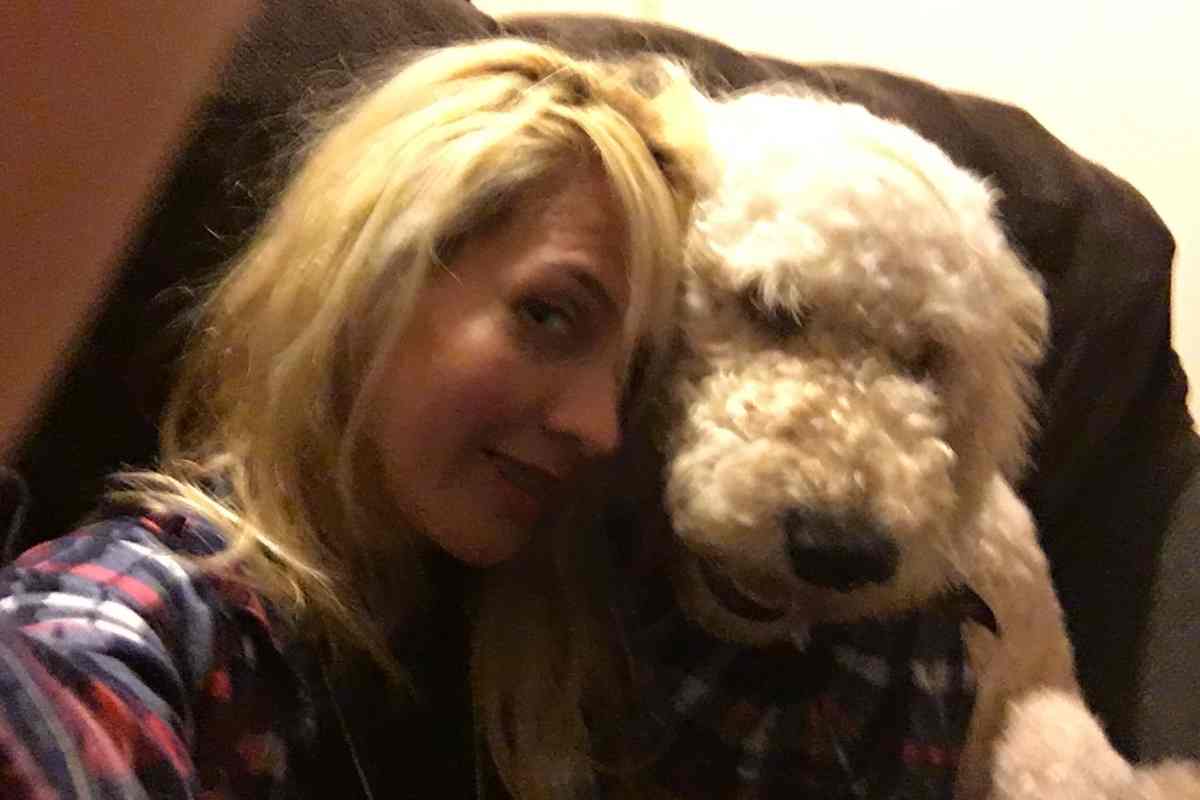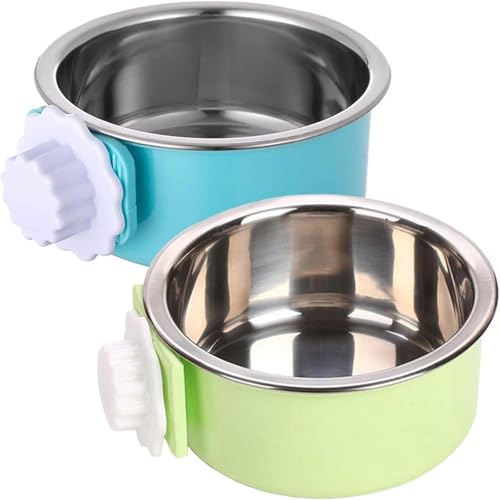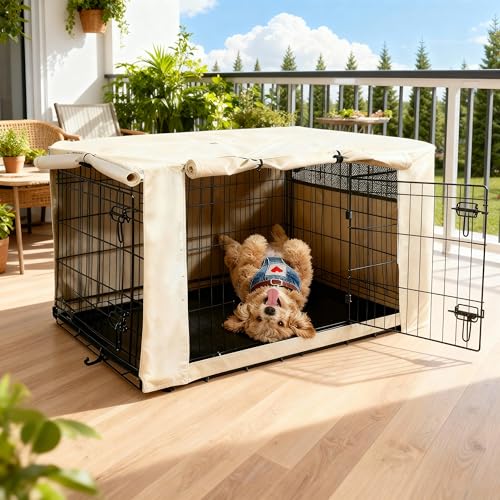How to Crate Train A Goldendoodle (Explained!)
So you got a Goldendoodle? Congratulations! Now you may be wondering where to begin training the pup. If you’re like me, I always go straight to potty training first because it’s one of the first issues that new dog owners face as soon as your furry one comes home.
One of the best methods for potty training is crate training. They go hand-in-hand and can be helpful for various things.
How Do You Crate Train A Goldendoodle?
To crate train a Goldendoodle, start by making the crate comfortable with soft bedding and toys. Gradually introduce your dog to the crate, allowing them to explore it freely. Use treats to encourage them to enter, and always make the crate a positive experience. Consistency and patience are key.
What is Crate Training?
If you don’t know how to crate train or haven’t done it in a while, then you’ve come to the right place.
Crate training is the method used to establish a place for your puppy to call home inside your home. Crates, or kennels, should only be used as their safe place and not as a punishment.
It can be helpful when you’re housetraining in order to balance what you want them to be able to do first or limit the areas in the house that they can reach.
Never leave your puppy in the crate for more than four hours at a time. Doing so will cause social problems or depression.
There are so many options when it comes to picking out a crate. Some things to keep in mind are what you plan to use it for, where you plan to put it, and does it fit your Goldendoodle well? So that this can be a one-time purchase, figure out how big your Goldendoodle will be, based on where you got it and its parents.
Goldendoodles usually stay between 45-60 pounds as adults. But certain large breed Goldendoodles can reach up to 90 pounds.
So knowing where they came from and how big their parents were can determine a lot to look forward to in size. Never get a crate that is too small, this will inhibit your puppy’s growth, and they can reject the crate during training.
So first things first, find a crate that’ll do the job.
Amazon has hundreds of options for crates in all different sizes, styles, materials, and colors. An industry standard for a long time has been this one:
You also have accessories to be used inside the crate, so be on the lookout for crate padding that fits your pup to give them a soft place to lie down.
Dog bowls for crates are also an option so that you can make sure your Goldendoodle has food and water while inside its crate.
Lastly, crate covers can help your puppy block out the world and relax in their own puppy home.
Once you pick out the crate and accessories you like most and feel like they’re the best option for your Goldendoodle, you’re ready to start.
To start crate training, ease your pup into it and show them appreciation when they enter, be sure not to shut the crate right away, so you don’t scare them. Give your puppy a treat or praise after it goes into its crate.
Positive reinforcement is key to good training. You can also give your pup toys to play with inside the crate to make the experience that much nicer.
Goldendoodles are relatively easy to train and will want to continue to draw positive affirmation from you. So keep having your pup go in and out of the crate to let them know they’re doing a good job. Don’t rush the process. This training should be a pleasant experience for both you and your puppy.
Shutting the Crate
Now it’s time to shut the crate with your puppy inside. Doing this can show you whether or not your Goldendoodle is comfortable with its crate.
Praise or treat them once you shut the gate, so they know this is normal. If they behave well when the crate door is closed, the training can move forward.

If they seem nervous, whine, or bark when you shut the crate, open the gate and keep having your Goldendoodle come in and out to get more used to it.
Take your time with this, and don’t get discouraged. Your puppy is experiencing many new things, and a crate will take some getting used to.
You may have to adjust the accessories to help them become more accustomed, like the cover, their bed, blanket, toys, or even their food and water bowl. One or more items may have to go, so they don’t feel so cramped in the crate.
Play around with the setup until you get the best fit for your Goldendoodle. Remember, your puppy needs to be comfortable with their crate and know that it’s a safe place in order for them to accept it as their little home.
With the gate shut, try to leave the room and let your Goldendoodle get comfortable inside the crate. I always try to keep an eye on them so I can see how they’re doing. Don’t go too far when shutting the crate for the first time.
Give them a few minutes alone, then come back in the room and let them out, praise or treat them when you open the gate.
Repeat this process a couple of times so your Goldendoodle can get used to being in the crate by themselves with the gate shut.
I usually put them in, shut the gate for a few minutes without being in the room, then I let them out and take them outside to start the potty training process.
When we come back from going potty, I’ll put my puppy back into the crate and shut the gate again, repeating the process. Remember positive reinforcement every time, especially after they go potty outside.
Make sure to keep letting your Goldendoodle out to go outside about every 20-30 minutes. It is important to have your puppy return to the crate once they’ve done their business, to teach them they should only go potty outside.
Usually, puppies will try not to soil their bed in the crate, so you must be diligent about taking them outside. With the aforementioned process, I try to increase the time I leave the room and allow my puppy to be alone in the crate longer.
Overnight in the Crate
This is where things can become a bit difficult when it comes to leaving your Goldendoodle in the crate.
You still have to make sure that you wake up and take your puppy outside when it seems necessary, granted if your puppy is sleeping, then the time without going outside may increase during the night, so it’s not as urgent as when they’re awake.
The problem is knowing when your puppy needs to go outside as you sleep. Usually, they let you know by whining.
Whining is perfectly normal after you’ve introduced the crate to them and know they’ve become accustomed to it. The trick is to figure out why your puppy is whining.
Many pet owners, especially new ones, will come to every beckoning call that their
Goldendoodle lets out, but this is not a good strategy. It might sound harsh, but it’s best to ignore the whining unless you know they need to go outside again.
Don’t give in to the whining if you know they’ve relieved themselves. Your puppy needs to know that whining is not their ticket out of the crate.
Again, whining is normal. Don’t worry. Your Goldendoodle will get used to it, and if you follow the steps above with easing them into it the correct way, then they’ll be more comfortable with their crate from the get-go.
Name the Crate
It’s a good idea to name your Goldendoodle’s crate, and I don’t mean Sally or John. Your puppy needs to know what their home is called so that if you need to send them to it, you can teach them the command, and eventually, they’ll understand before you even say something.
Usually, pet owners call it ‘bed’ or ‘kennel.’ It’s a simple command; you say the name, direct your puppy to the crate, and give them positive reinforcement to go to the crate through your command.
This is especially helpful when you need your Goldendoodle to go to their crate when you know someone is coming over or you’re going to be busy and can’t have your puppy running around. You say the name command, they go into their crate, and you shut the gate.

To Wrap Things Up
Crate training is helpful in so many ways, it can give your Goldendoodle a safe place to call their own, and it can assist with other training like potty training and house training.
Crates also allow for a place to keep your puppy when you can’t watch them, it’ll keep them safe, and you can rest assured that they won’t be getting into anything or getting
If you’re considering crate training, not only do I recommend it, but veterinarians do as well. This training method is helpful with puppies and dogs of any age and size and can help you both in the short term and long run.


